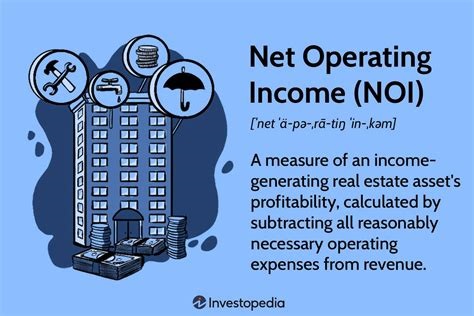We have over 2 decades of experience evauating business and investment values. Our teams have spent weeks pulling apart leases, expenses and billings, payroll, utilities and taxes. We have conducted over a hundred forenzic investigations, pairing bills and charges to contracts and leases. You’d be surprised how often your business is over billed, and our team will dig into all the receipts.
We run a full historical analysis on expenses, and help project those costs going forward in detailed projections, taking into account CPI and contract cost provisions. Having done this for countless investment firms and banks, our representations
Calculating Net Operating Income (NOI) for Your Business: A Critical Financial Metric.
Property management entails a range of expenses, such as insurance, maintenance, taxes, utilities, landscaping, cleaning, and security. For property owners, summing up these costs reveals a crucial financial figure: net operating income (NOI).
NOI is essential in evaluating the value and potential returns of a property, particularly for those new to property management. Let’s delve deeper into what net operating income is and how it’s calculated.
Understanding Net Operating Income Net operating income is a key indicator in the real estate sector, measuring the profitability of an asset or investment after operating expenses are deducted from the income. It’s primarily used for assessing commercial properties like office buildings, apartment complexes, and warehouses.
To calculate NOI, one must add all revenue from the property and then subtract operating expenses. These expenses include costs directly related to property management, such as real estate taxes, insurance, utilities, and maintenance. The calculation does not consider income tax, debt interest, capital expenditures, or depreciation, as these are not seen as direct operating expenses.
NOI is often compared to EBITDA (earnings before interest, taxes, depreciation, and amortization), a similar metric used in other industries to gauge operational profitability.
Typically, NOI is calculated on an annual basis, considering seasonal or irregular expenses like snowplowing, landscaping, or window cleaning.
Calculating Net Operating Income The formula for NOI is:
Gross operating income − operating expenses = NOI
To find these figures, gross operating income is determined from the maximum potential income from the property, subtracting any lost income due to vacancies or unpaid rent. Then, one subtracts the operating expenses.
For example, consider an office building with the following details:
- Office space: 75,000 square feet
- Rental rate: $30 per square foot annually
- Additional income from vending machines: $25,000
The NOI calculation would involve totaling the rent and vending machine income and then subtracting vacancies and operating expenses like property tax, management costs, utilities, insurance, and maintenance.
**Net Operating
Income and Real Estate Investment** Net operating income also plays a crucial role in real estate investment. It’s used to measure the potential return on investment of a property using the capitalization rate, or cap rate. This rate is calculated by dividing the NOI by the property’s purchase price. For instance, a building bought for $10 million with an NOI of $1 million has a cap rate of 10%.
Debt Costs and NOI NOI is often compared with debt interest payments to determine the debt-service coverage ratio (DSCR). This metric is crucial for property owners and lenders, as it measures the property’s ability to cover its debt obligations. A DSCR above 1 indicates a profitable investment.
Factors Influencing NOI Several factors can impact net operating income, such as changes in rent and vacancy rates, fluctuations in operating expenses, and overall market conditions. These factors can increase or decrease NOI, affecting the property’s profitability and investment appeal.
FAQs about Net Operating Income
- Is NOI the same as profit? While NOI is a measure of profitability in real estate, it differs from net income as it excludes debt interest, income taxes, and other non-operating expenses.
- How is NOI calculated? NOI is the total rent and other income minus operating expenses, excluding income tax, interest on debt, and capital expenditures.
- What is a good NOI percentage? There’s no standard ‘good’ NOI percentage. It’s important to consider NOI in relation to cap rates and the cost of financing a property purchase.
In summary, net operating income is a vital metric in assessing the financial health of a real estate investment. It provides insight into the profitability of a property, helping owners and investors make informed decisions. For anyone involved in property investment or management, understanding and correctly calculating NOI is essential.
